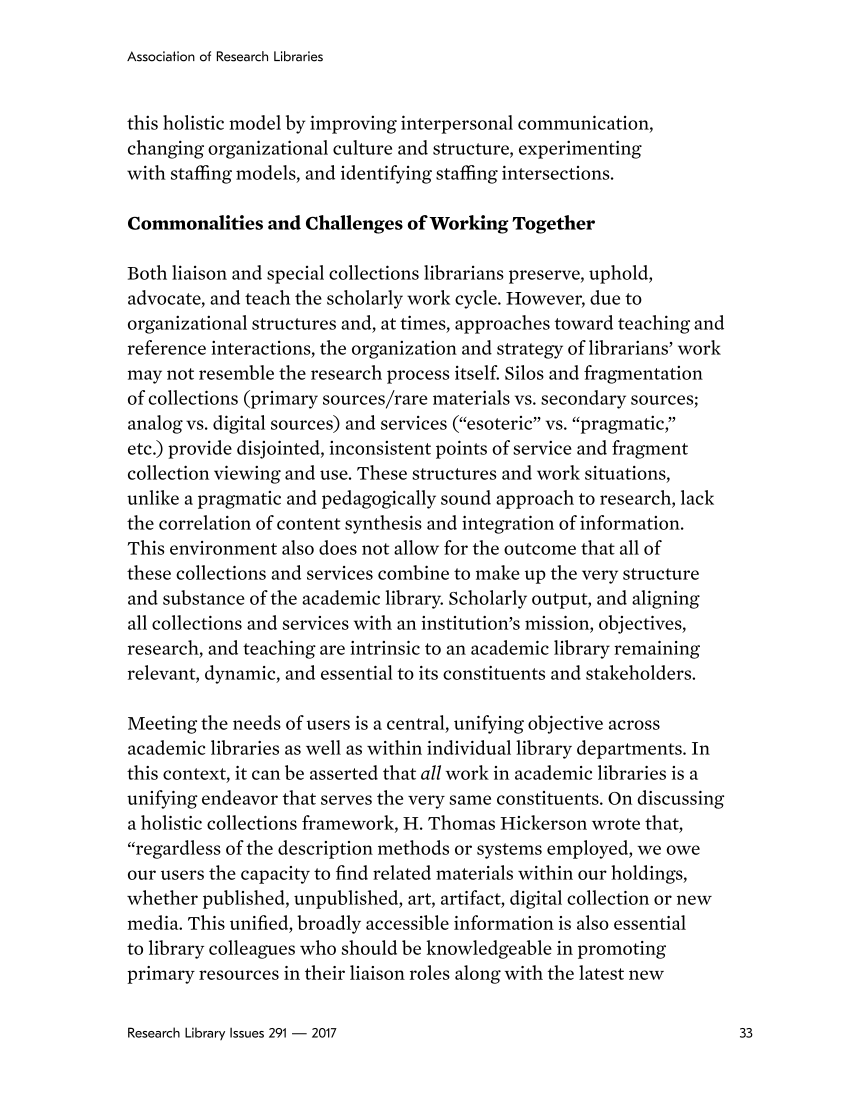33 Association of Research Libraries Research Library Issues 291 — 2017 this holistic model by improving interpersonal communication, changing organizational culture and structure, experimenting with staffing models, and identifying staffing intersections. Commonalities and Challenges of Working Together Both liaison and special collections librarians preserve, uphold, advocate, and teach the scholarly work cycle. However, due to organizational structures and, at times, approaches toward teaching and reference interactions, the organization and strategy of librarians’ work may not resemble the research process itself. Silos and fragmentation of collections (primary sources/rare materials vs. secondary sources analog vs. digital sources) and services (“esoteric” vs. “pragmatic,” etc.) provide disjointed, inconsistent points of service and fragment collection viewing and use. These structures and work situations, unlike a pragmatic and pedagogically sound approach to research, lack the correlation of content synthesis and integration of information. This environment also does not allow for the outcome that all of these collections and services combine to make up the very structure and substance of the academic library. Scholarly output, and aligning all collections and services with an institution’s mission, objectives, research, and teaching are intrinsic to an academic library remaining relevant, dynamic, and essential to its constituents and stakeholders. Meeting the needs of users is a central, unifying objective across academic libraries as well as within individual library departments. In this context, it can be asserted that all work in academic libraries is a unifying endeavor that serves the very same constituents. On discussing a holistic collections framework, H. Thomas Hickerson wrote that, “regardless of the description methods or systems employed, we owe our users the capacity to find related materials within our holdings, whether published, unpublished, art, artifact, digital collection or new media. This unified, broadly accessible information is also essential to library colleagues who should be knowledgeable in promoting primary resources in their liaison roles along with the latest new


















































